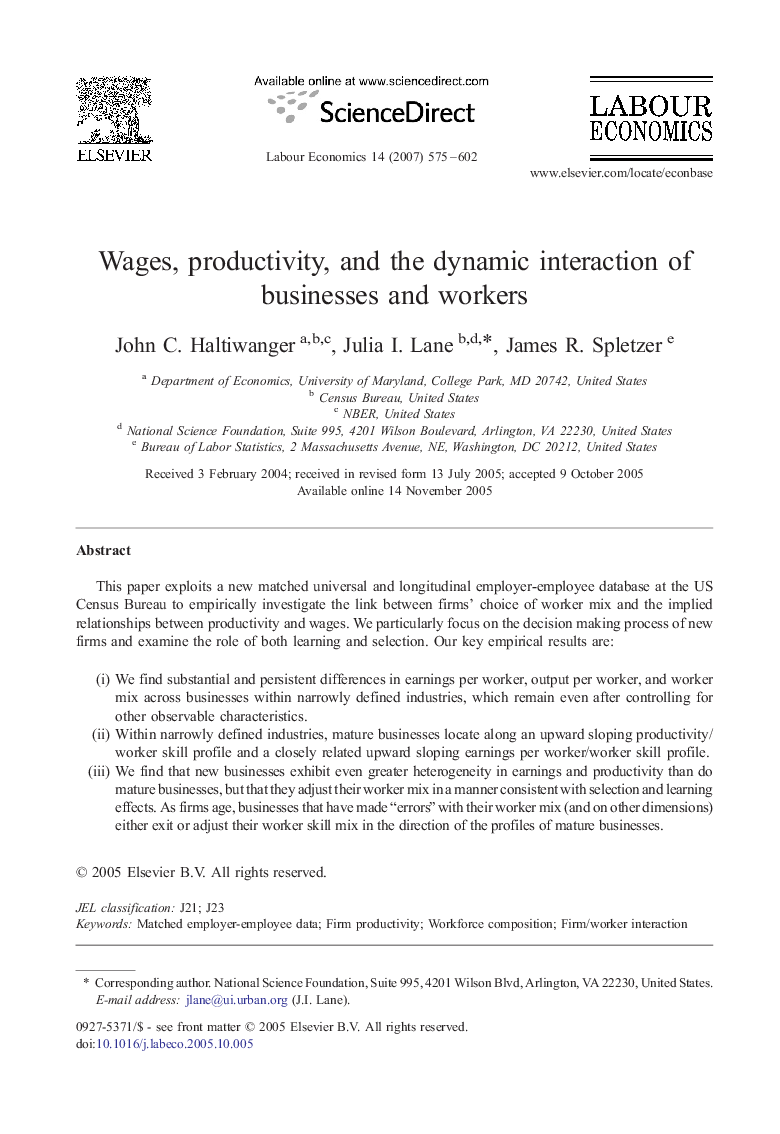| Article ID | Journal | Published Year | Pages | File Type |
|---|---|---|---|---|
| 971786 | Labour Economics | 2007 | 28 Pages |
This paper exploits a new matched universal and longitudinal employer-employee database at the US Census Bureau to empirically investigate the link between firms' choice of worker mix and the implied relationships between productivity and wages. We particularly focus on the decision making process of new firms and examine the role of both learning and selection. Our key empirical results are:(i)We find substantial and persistent differences in earnings per worker, output per worker, and worker mix across businesses within narrowly defined industries, which remain even after controlling for other observable characteristics.(ii)Within narrowly defined industries, mature businesses locate along an upward sloping productivity/worker skill profile and a closely related upward sloping earnings per worker/worker skill profile.(iii)We find that new businesses exhibit even greater heterogeneity in earnings and productivity than do mature businesses, but that they adjust their worker mix in a manner consistent with selection and learning effects. As firms age, businesses that have made “errors” with their worker mix (and on other dimensions) either exit or adjust their worker skill mix in the direction of the profiles of mature businesses.
